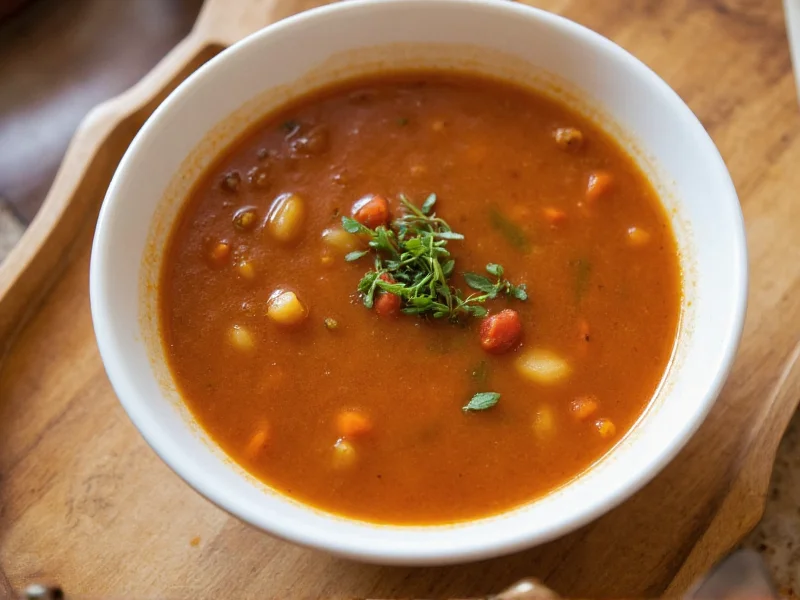The Cultural Context of Porcupine as Food
While porcupine soup might sound unusual to modern palates, several indigenous cultures have incorporated porcupine meat into their traditional diets. Among Native American tribes like the Ojibwe and Cree, porcupine was valued as a reliable food source during winter months when other game was scarce. In parts of Central Africa, particularly among the Baka and Mbuti peoples, porcupine hunting remains part of traditional subsistence practices.
Understanding traditional porcupine preparation requires recognizing these cultural contexts. For indigenous communities, consuming porcupine wasn't merely about sustenance but represented deep knowledge of local ecosystems and survival skills passed through generations. The preparation methods developed over centuries addressed both safety concerns and flavor optimization.
Preparation Techniques for Porcupine Meat
Preparing porcupine for consumption involves specialized techniques that differ significantly from conventional meat preparation. The most critical step is quill removal, which requires specific knowledge to avoid injury and contamination. Traditional methods include singeing the skin over open flame to loosen quills before scraping them away.
| Cultural Tradition | Preparation Method | Common Seasonings |
|---|---|---|
| Ojibwe (North America) | Boiling with inner bark of cedar | Berries, wild onions |
| Baka (Central Africa) | Slow roasting before soup preparation | Local herbs, palm oil |
| Cree (Northern Canada) | Extended boiling with medicinal plants | Willow bark, spruce tips |
After quill removal, traditional porcupine soup preparation typically involves extended boiling to tenderize the lean meat and eliminate potential pathogens. Many indigenous recipes incorporate medicinal plants that serve both flavor and safety purposes. The resulting broth often has a distinctive gamey flavor that pairs well with wild vegetables and berries.
Safety Considerations for Porcupine Consumption
Modern enthusiasts exploring traditional porcupine soup recipes must understand significant safety considerations. Porcupines can carry parasites like trichinella, making thorough cooking essential. The USDA recommends cooking game meats to an internal temperature of 160°F (71°C) to ensure safety.
Legal restrictions also affect porcupine consumption in many regions. In the United States, hunting regulations vary by state, with some requiring special permits for porcupine hunting. Conservation status differs globally—while North American porcupines are generally not endangered, certain African species face habitat pressures that restrict hunting.
Nutritional Profile of Porcupine Meat
Porcupine meat offers notable nutritional benefits that contributed to its historical importance in survival diets. As lean game meat, it provides high-quality protein with lower fat content than domesticated meats. Analysis of traditional game meats shows porcupine contains significant amounts of iron, zinc, and B vitamins.
Compared to conventional meats, porcupine offers a distinctive nutritional profile that reflects its natural diet of bark, leaves, and vegetation. This wild diet contributes to higher levels of certain omega-3 fatty acids compared to grain-fed domesticated animals. However, the strong flavor profile means porcupine soup typically requires careful seasoning to appeal to modern tastes.
Modern Interpretations of Traditional Porcupine Soup
Today, porcupine soup appears primarily in cultural preservation contexts rather than mainstream cuisine. Some indigenous chefs incorporate traditional knowledge into contemporary dishes while respecting cultural protocols. These modern interpretations often focus on sustainability and reconnecting with ancestral foodways.
For culinary explorers interested in traditional game meat soups, porcupine represents just one example of how indigenous knowledge developed sophisticated food preparation techniques. Understanding these traditions requires respect for cultural context and recognition that many practices developed as survival strategies rather than culinary preferences.
Exploring Traditional Game Meat Preparation
Those interested in traditional porcupine soup preparation should approach the subject with cultural sensitivity and proper research. Consulting with indigenous food experts provides the most authentic understanding of these culinary traditions. Many tribal cultural centers offer educational programs about traditional food preparation that honor both the practical and spiritual aspects of these practices.
For those unable to access traditional knowledge holders, reputable anthropological studies and cookbooks focused on indigenous cuisine provide valuable insights. When exploring historical porcupine cooking methods, always prioritize safety, legality, and cultural respect over culinary curiosity.
Is porcupine meat safe to eat if properly prepared?
Yes, porcupine meat is safe to eat when properly prepared. Traditional preparation methods include thorough cooking to 160°F (71°C) to eliminate potential parasites like trichinella. The critical safety step involves careful quill removal before cooking, as improper handling can lead to injury or contamination.
Which indigenous cultures traditionally consumed porcupine soup?
Several indigenous cultures incorporated porcupine into their traditional diets, including Ojibwe and Cree tribes in North America who prepared porcupine soup during winter months, and Baka and Mbuti communities in Central Africa who included porcupine in their subsistence hunting practices. Each culture developed specific preparation techniques suited to their environment.
What are the legal considerations for hunting porcupines for food?
Legal restrictions vary significantly by region. In the United States, state wildlife agencies regulate porcupine hunting, with some states requiring special permits. Many African countries have specific regulations regarding porcupine hunting due to conservation status. Always check local wildlife regulations before hunting any game species, as penalties for illegal hunting can be severe.
How does porcupine meat compare nutritionally to other game meats?
Porcupine meat is leaner than many domesticated meats with higher protein content per serving. It contains significant amounts of iron, zinc, and B vitamins. Compared to deer or elk, porcupine has a stronger gamey flavor and slightly different fat composition due to its natural diet of bark and vegetation. The nutritional profile reflects its wild habitat and foraging behavior.
What are the traditional methods for removing porcupine quills before cooking?
Traditional quill removal methods include singeing the skin over open flame to loosen quills, followed by scraping with bone or stone tools. Some indigenous techniques involve burying the carcass to allow natural decomposition of quill follicles before removal. Modern hunters often use specialized pliers and protective gloves, but traditional methods developed over centuries remain effective when performed correctly by experienced practitioners.











 浙公网安备
33010002000092号
浙公网安备
33010002000092号 浙B2-20120091-4
浙B2-20120091-4